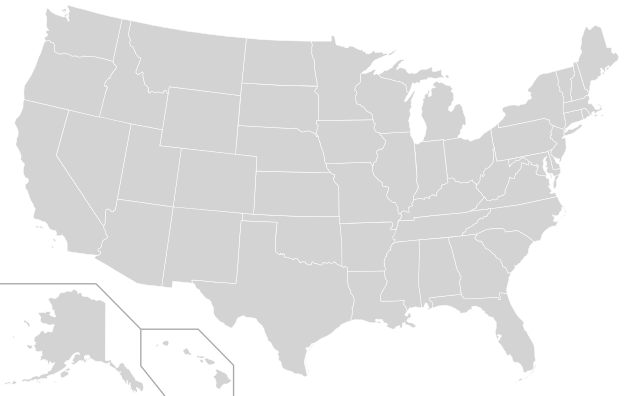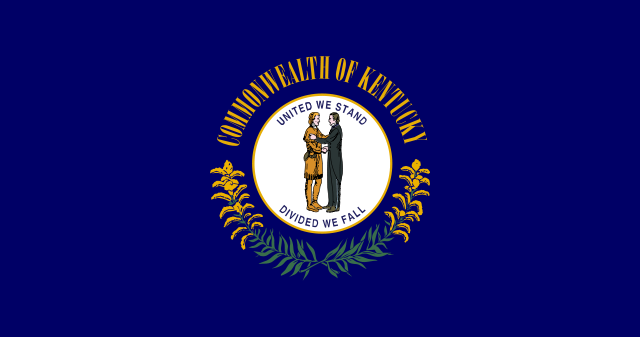
By Leo Kolivakis
Originally published at Pension Pulse
As you can read [in this CNBC article titled Funding shortfalls put pensions in peril], America’s private and public pensions aren’t in good shape. There are a lot of reasons why this is the case and my fear is the worst is yet to come.
One thing I can tell you, the attack on public pensions continues unabated. Andrew Biggs, a resident scholar for the conservative American Enterprise Institute wrote a comment for the Wall Street Journal, Pension Reform Doesn’t Mean Higher Taxes:
The Pennsylvania State House held a hearing on Tuesday about reforms that would shore up the state’s public-employee pension program. The hearing was overdue. Annual required contributions to the state’s defined-benefit plan have soared to more than 20% of employee payroll from only 4% in 2008. Legislators in the state, like many elected officials nationwide, are looking for a way out.
State Rep. Warren Kampf has introduced a bill to shift newly hired government employees to defined-contribution pensions similar to a 401(k) plan. Defined-contribution pensions offer cost stability for employers, transparency for taxpayers and portability for public employees.
But the public-pension industry—government unions and the various financial and actuarial consultants employed by pension-plan managers—claims that “transition costs” make switching employees to defined-contribution pensions prohibitively expensive. Fear of “transition costs” has helped scuttle past reforms in Pennsylvania, as in other states. But the worry is unfounded.
The argument goes as follows: The Governmental Accounting Standards Board’s rules require that a pension plan closed to new hires pay off its unfunded liabilities more aggressively, causing a short-term increase in costs. Thus the California Public Employees’ Retirement System, known as Calpers, claimed in a 2011 report that closing the state’s defined-benefit plans would increase repayment costs by more than $500 million. Similar claims have been made by government analysts in Minnesota, Michigan and Nevada. The National Institute for Retirement Security, the self-styled research and education arm of the pension industry, claims that “accounting rules can require pension costs to accelerate in the wake of a freeze.”
But GASB standards don’t have the force of law; nearly 60% of plan sponsors failed to pay GASB’s supposedly required pension contributions last year. That includes Pennsylvania, where the public-school-employees plan last year received only 42% of its actuarially required contribution. GASB standards are for disclosure purposes and not intended to guide funding. New standards issued in 2014, GASB says, “mark a definitive separation of accounting and financial reporting from funding.”
In fact, nothing requires a closed pension plan to pay off its unfunded liabilities rapidly, and there’s no reason it should. Unfunded pension liabilities are debts of the government; employee contributions are not used to pay off these debts. Whether new hires are in a defined-contribution pension or the old defined-benefit plan, the size of the unfunded liability and the payer of that liability are the same.
More recently, pension-reform opponents have shifted to a different argument: Once a pension plan is closed to new hires, it must shift its investments toward much safer, more-liquid assets that carry lower returns. Actuarial consultants in Pennsylvania have claimed that such investment changes could add billions to the costs of pension reforms.
This argument doesn’t hold. It is standard practice for a pension to fund near-term liabilities with bonds and to pay for long-term liabilities mostly with stocks. A plan that is closed to new entrants stops accumulating long-term liabilities. As a result, the stock share of the plan’s portfolio will gradually decline. But that’s because the plan’s liabilities have been reduced. Plans would not be applying a lower investment return to the same liabilities. They would apply a lower investment return to smaller liabilities.
Many public pension plans apparently believe that a continuing, government-run pension can ignore market risk, while a plan that is closed to new entrants must be purer than Caesar’s wife. The reality is that all public plans, open and closed, should think more carefully about the risks they are taking. But the difference in investment returns between an open plan and a closed one should be a minor consideration for policy makers considering major pension reforms.
Shifting public employees to defined-contribution retirement plans won’t magically make unfunded liabilities go away. Pension liabilities must be paid, regardless of what plan new employees participate in. But defined-contribution plans, which cannot generate unfunded liabilities for the taxpayer, at least put public pensions on a more sustainable track.
The problem with this Wall Street Journal article is it’s factually wrong. Jim Keohane, CEO of the Healthcare of Ontario Pension Plan (HOOPP), sent me these comments:
I read the clip from the WSJ you included on your blog, and I thought you would be interested in a piece of research on the subject which was completed by Dr. Robert Brown (click here to view the paper). This is a fact based piece of research which looked at the cost of shifting from DB to DC. Proponents of a shift from DB to DC, such as this article, portray this as a win-win situation, but when Dr. Brown looked into the facts, what he found was that this is in fact a lose-lose situation. The liabilities in the existing plans are very long tailed and putting these plans into windup mode causes the costs and risks to go up, so there are no savings to taxpayers – in fact the costs go up, and the individuals are much worse off having been shifted to DC plans because they end up with much lower pensions.
When I read these articles in the Wall Street Journal, it makes my blood boil. Why? Am I a hopeless liberal who believes in big government? Actually, not at all, I’m probably more conservative than the resident “scholars” at the American Enterprise Institute (read my last comment on Greece’s lose-lose game to understand the effects of a bloated public sector and how it destroys an economy).
But the problem with this article is that it spreads well-known myths on public pensions, and more importantly, it completely ignores the benefits of defined-benefit plans to the overall economy and long-term debt profile of the country. Worse still, Biggs chooses to ignore the brutal truth on defined-contribution plans as well as the 401(k) disaster plaguing the United States of Pension Poverty.
Importantly, pension policy in the United States has failed millions of Americans struggling to save enough money and all these conservative think tanks are spreading dangerous myths telling us that DC plans “offer cost stability for employers, transparency for taxpayers and portability for public employees.”
The only transparency DC plans offer is that they will ensure more pension poverty down the road, less government revenue (because people with no retirement savings won’t be buying as many goods and services), and higher social welfare costs to society due to higher health and mental illness costs.
And again, I want make something clear here, I’m not arguing for bolstering defined-benefit plans for all Americans from a conservative or liberal standpoint. Good pension policy is good economic policy. This is why I wrote a comment for the New York Times stating that U.S. public pensions need to adopt a Canadian governance model (less the outlandish pay we pay our senior public pension fund managers) in order to make sure they operate at arms-length from the government and have the best interests of all stakeholders in mind.
But the problem in the United States is that politicians keep kicking the can down the road, just like they did in Greece, and when a crisis hits, they all scramble to implement quick nonsensical policies, like shifting public and private employees into defined-contribution plans, which ensures more pension poverty and higher debt down the road.
Finally, while most Americans are struggling to retire in dignity, the top brass at America’s largest corporations are quietly taking care of themselves with lavish pensions. Theo Francis and Andrew Ackerman of the Wall Street Journal report, Executive Pensions Are Swelling at Top Companies:
Top U.S. executives get paid a lot to do their jobs. Now many are also getting a big boost in what they will be paid after they stop working.
Executive pensions are swelling at such companies as General Electric Co., United Technologies Corp. and Coca-Cola Co. While a significant chunk of the increase is the result of arcane pension accounting around issues like low interest rates and longer lifespans, the rest reflects very real improvements in the executives’ retirement prospects.
Pension gains averaged 8% of total compensation for top executives at S&P 500 companies last year, up sharply from 3% the year before, according to data from LogixData, which analyzes SEC filings. But the gains are much larger for some executives, totaling more than $1 million each for 176 executives at 89 large companies that filed proxy statements through mid-March. For those executives, pension gains averaged 30% of total pay.
The gains often don’t represent new pay decisions by corporate boards. Instead, they reflect the sometimes dramatic growth in value of retirement promises made in the past. Nonetheless, they are creating an optics problem for companies at a time when executive-pay levels are under greater scrutiny from investors and the public. Companies now face regular shareholder votes on their pay practices that can be flash points for broader concerns, leaving them sensitive about appearing too generous.
New mortality tables released last fall by the American Society of Actuaries extended life expectancies by about two years. That, as well as low year-end interest rates, helped push pension gains higher than many companies had expected. The result is much higher current values for plans with terms like guaranteed annual payouts, which are no longer offered to most rank-and-file workers.
GE Chief Executive Jeff Immelt’s compensation rose 88% last year to $37.3 million. Meanwhile, excluding $18.4 million in pension gains, his pay actually fell slightly to $18.9 million.
The company says about half of the pension increase came from changes in its assumptions about interest rates and life span. About $8.8 million, however, comes from an increase of nearly $490,000 a year in the pension checks he stands to take home as his pay has risen and he approaches 60 years old, the age at which top GE executives can collect full pension benefits.
In all, Mr. Immelt’s pension is valued at about $4.8 million a year for life. The company puts its current value at about $70 million, up from around $52 million a year ago.
A GE spokesman said that much of the gain reflects accounting considerations and that Mr. Immelt’s recent salary increases reflect balanced-pay practices and board approval of his performance.
The SEC is particular about how companies report pay in their proxy statements. There is a standard table that breaks out salary, bonuses and pension gains, along with totals for the past three years, and other details. GE, encouraging investors to overlook the pension gains, added a final column to the table to show what top executives’ total pay would look like without them. The company says investors find the presentation useful in making proxy voting decisions.
Lockheed Martin is also asking investors to look past pension gains when considering its executives’ total pay.
At Lockheed Martin Corp., CEO Marillyn Hewson’s total pay rose 34% to $33.7 million last year, with $15.8 million of that stemming from pension gains. An extra column in the proxy statement’s compensation table strips out those gains, showing her pay up about 13% to $17.9 million.
Lockheed says that $5 million of the pension gains can be traced to changes in interest rates and mortality assumptions. Most or all of the remaining $10.8 million probably stems from increases in the payments she would receive in retirement: about $2.3 million a year now, up from about $1.6 million a year under last year’s proxy disclosure. Ms. Hewson’s pay rose sharply with her ascent to CEO in 2013 and chairman last year, increasing her pension benefit significantly.
Overall, the company’s obligation for future pension benefits for executives and other highly paid employees totaled $1.1 billion last year, up from $1 billion at the end of 2013.
A Lockheed Martin spokesman said the company broke out a nonpension compensation total in the proxy statement to provide more context for pay.
Executive pensions generally don’t consume the attention that pensions for the rank and file do. For years, as costs of traditional pension plans have risen amid low interest rates and longer lifespans, big companies have been closing them to new employees or even freezing benefits in place, often continuing with only a 401(k) plan for all but the oldest workers.
Last June, Lockheed Martin told its nonunion employees that it would stop reflecting salary increases in their pension benefits starting next year, and that the benefits would stop growing with additional years of work starting in 2020.
“It eliminates a lot of the variability that defined-benefit pension plans can create in our cost structure,” Chief Financial Officer Bruce Tanner told investors during a Dec. 3 conference presentation.
In 2011, GE stopped offering new employees traditional defined-benefit pensions and replaced them with 401(k) plans. At the time, Mr. Immelt cited recent market downturns and lower interest rates as being among the reasons for the shift.
In a cruel twist of irony, America’s top CEOs are now enjoying much higher pension payouts while they cut defined-benefit plans to new employees and increase share buybacks to pad their insanely high compensation. I guess longer life spans are fine when it comes to CEOs’ pensions but not when it comes to their employees’ pensions.
Lastly, my comment on the 401(k) experiment generated a lot of comments on Seeking Alpha. Some people rightly noted that looking at 401(k) balances distorts the true savings because it doesn’t take into account roll overs into Roth IRAs. When you factor in IRAs, savings are much higher.
While this is true, there is still no denying that Americans aren’t saving enough for retirement and that 401(k)s are an abject failure as the de facto pension policy of America. It’s high time Congress stops nuking pensions and starts thinking of bolstering and enhancing Social Security for all Americans, as well as implementing shared risk and serious governance reforms at public pensions.









